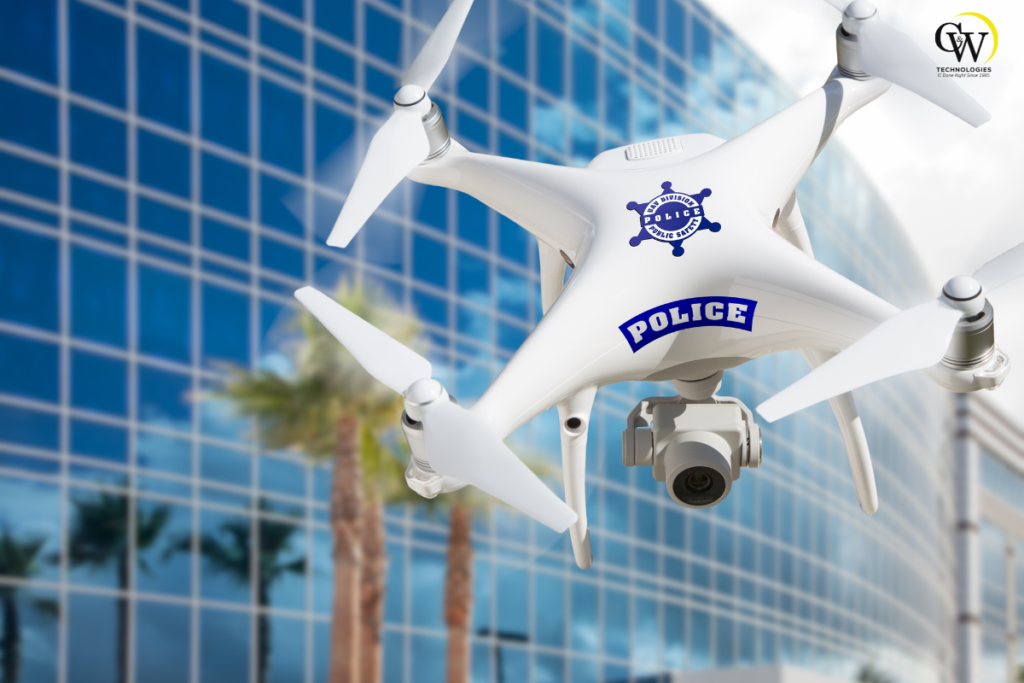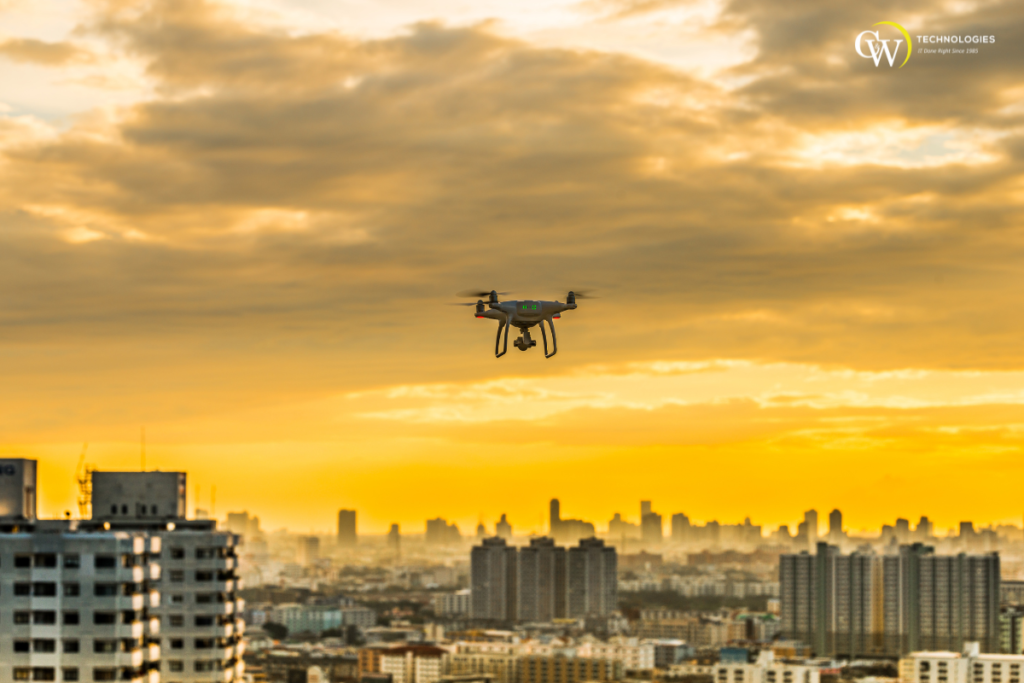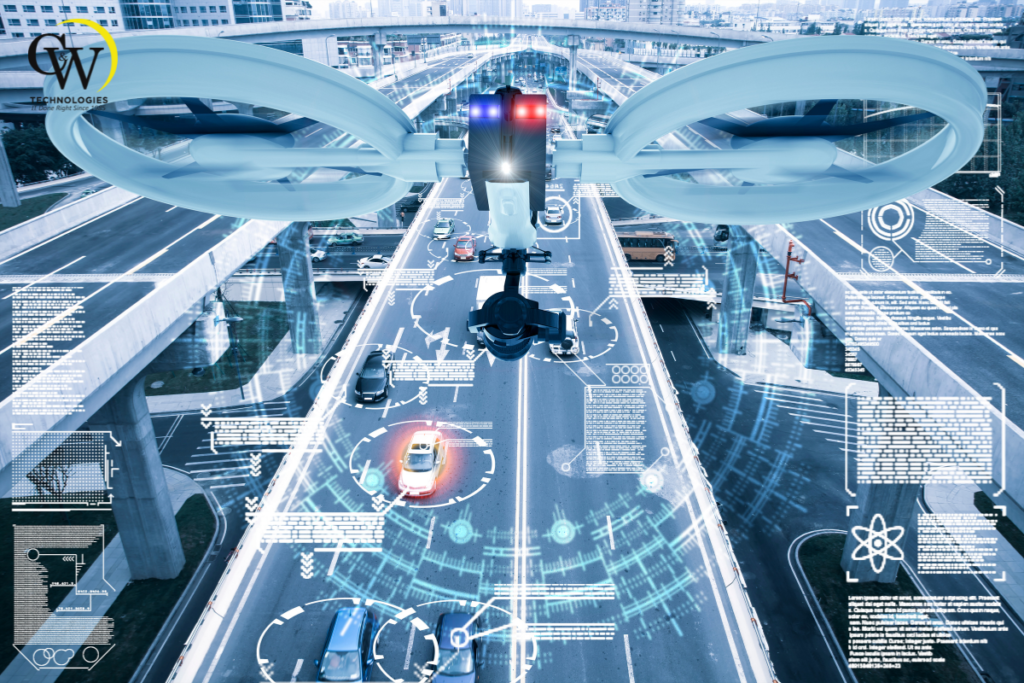As technology continues to advance at a rapid pace, the use of drones in various industries has become increasingly prevalent. From aerial photography and package delivery to search and rescue operations, drones have proven to be valuable tools in many fields. However, one area where their potential has yet to be fully explored is law enforcement. With the ability to provide real-time surveillance and gather evidence from above, police drones could revolutionize how crimes are prevented and solved. In this blog, we will delve into the future of police drones and discuss how they can improve public safety while also raising important ethical concerns.
What Are Drones?
Before we dive into the future applications of drones, let’s understand what they are. Drones (also known as unmanned aerial vehicles or UAVs) are flying machines controlled remotely by a pilot or autonomously using onboard computers and GPS systems. These versatile devices can be small enough to fit in your hand or as large as a commercial airplane. They have multiple rotors, allowing them to take off vertically and hover in place while carrying cameras, sensors, and other equipment.
What Are Police Drones?
Police drones are UAVs that are specifically used by law enforcement agencies to aid in their operations. These can be equipped with high-resolution cameras, thermal imaging, and infrared sensors to gather intelligence during investigations and emergency situations. They have the ability to fly over areas that may be difficult for officers on foot or in vehicles to access, providing a new perspective and invaluable information.
Potential Uses of Police Drones
The potential uses of police drones are vast and varied. Here are some examples of how they can be utilized:
- Surveillance: They are equipped with high-resolution cameras could provide real-time surveillance of crime scenes or public events. This would allow officers to monitor crowds and identify potential threats more efficiently.
- Search and Rescue: In emergency situations, they can be used to search for missing persons or provide assistance during natural disasters. With thermal imaging technology, they can locate individuals in remote areas or under rubble where traditional search methods may be difficult.
- Traffic Management: They could also be used to monitor traffic patterns and identify potential hazards such as accidents or roadblocks. This would help officers respond quickly and efficiently, ensuring public safety on the roads.
- Crime Scene Investigation: They’re equipped with 3D mapping software and high-resolution cameras can capture detailed images of crime scenes from a bird’s eye view. This would assist in gathering evidence and reconstructing complex crime scenes.
- Crowd Control: During protests or large-scale events, they can provide a bird’s eye view of the crowd and help prevent violence by monitoring for potential threats.
The Benefits of Police Drones
The use of police drones has many potential benefits, including:
- Improved Officer Safety: By using drones to gather intelligence and surveil dangerous situations, officers can avoid putting themselves in harm’s way. This would ultimately reduce the risk of injury or loss of life among law enforcement personnel.
- Efficiency and Cost Savings: In situations where drones are used instead of helicopters or other expensive equipment, there may be significant cost savings for police departments. Drones are also more efficient and can cover larger areas in less time.
- Public Safety: With the ability to gather real-time data and provide an aerial perspective, police drones could improve overall public safety. By identifying potential threats or assisting in emergency situations, they could prevent crimes from occurring and save lives.
Ethical Concerns
While the use of police drones has many potential benefits, it also raises ethical concerns. Some of these include:
- Invasion of Privacy: The use of surveillance drones by law enforcement may raise concerns about invasion of privacy for individuals who are being monitored without their knowledge or consent.
- Data Collection and Storage: Drones equipped with high-resolution cameras and sensors have the ability to collect vast amounts of data. The storage and use of this data raise concerns about potential misuse or violation of privacy rights.
- Racial and Social Biases: There is also the risk that police drones may perpetuate racial or social biases, especially if they are used to target specific communities or demographics.
What Are Autonomous Drones and How Do Autonomous Drone Technology Have a Positive Impact on Society?
Autonomous drones, powered by AI and advanced sensors, can operate without human pilots, offering efficiency in industries like agriculture, transportation, and disaster response. While they hold great potential to improve daily life, ethical concerns such as job displacement and data misuse must be addressed.
Latest Innovations in Drone Technology
The potential of drones is only limited by our imagination. With advancements in technology, we’re seeing impressive developments in drone capabilities every day. Here are some of the latest innovations that are shaping the future of drones:
- Longer Battery Life: One significant limitation of drones has been their short flight time due to battery life. However, with advances in battery technology, we’re now seeing drones with longer flight times, opening up new possibilities for their use.
- Improved Cameras: High-quality cameras have become a standard feature in drones, allowing for better image and video capture. Some drones even offer 360-degree views and thermal imaging capabilities.
- AI-Powered Flight: As mentioned earlier, autonomous drone technology is rapidly advancing, enabling drones to fly without human intervention. This technology also allows for complex tasks like surveying large areas or monitoring specific targets without human supervision.
How Do Drones Affect Future Tech?
The possibilities of drone technology are endless, with the potential to transform various industries, including transportation, agriculture, construction, and even entertainment. The integration of drones into these sectors is expected to increase efficiency and reduce costs significantly. For example, drones can capture detailed images and data from hard-to-reach areas for inspection and maintenance purposes in the construction industry. In agriculture, drones equipped with multispectral cameras can monitor crop health in real-time and assist in precision farming practices.
Who is C&W Technologies?
C&W Technologies is a technology company that specializes in developing cutting-edge solutions for various industries. We offer innovative software and hardware products, including AI-powered systems and advanced sensors, to improve efficiency and productivity for their clients. Our expertise lies in creating customized solutions tailored to the specific needs of each industry they serve. With a team of experienced engineers and developers, C&W Technologies continues to push the boundaries of technology and shape the future of various sectors. So, while we currently do not use drones, our expertise in other areas shows our potential to be leaders in drone technology as well.
Contact Us
Contact us at C&W Technologies today for more information or to discuss how they can help revolutionize your industry with innovative technology solutions. We are always open to collaborating with individuals and organizations who share our vision of creating a safer, more efficient world through technology advancements. Let’s work together to shape the future!
Frequently Asked Questions (FAQ’s)
Q: What is virtual desktop infrastructure?
A: Virtual desktop infrastructure (VDI) is a technology that allows for the creation and management of virtual desktops on a remote server, providing users with access to their desktop and applications from any device with an internet connection.
Q: How does artificial intelligence (AI) play a role in drone technology?
A: AI powers autonomous capabilities in drones, allowing them to perform complex tasks without human intervention. AI also enables drones to analyze data and make decisions based on the information gathered, making them more efficient and effective in various industries.
Q: What does it mean to have a proven track record in technology development?
A: Having a proven track record means having a history of successful projects and satisfied clients, showcasing the company’s expertise and reliability in developing technology solutions.
Q: What are autonomous capabilities?
A: Autonomous capabilities refer to the ability of a device or system to operate without human control or intervention.
Q: How do drones analyze data?
A: Drones use advanced sensors and software to gather data from their surroundings, which is then analyzed through artificial intelligence algorithms to extract valuable insights and information.
Q: How can drones benefit large scale industrial sites?
A: By providing high-quality visual data and performing tasks like inspection and monitoring, drones can boost productivity and efficiency in large scale industrial sites by reducing manual labor and streamlining processes.
Q: In what ways can drone technology contribute to digital transformation?
A: Drone technology can contribute to digital transformation by providing new and innovative solutions for various industries, improving efficiency, reducing costs, and driving progress through technological advancements.
Q: What is the purpose of a data hub in drone operations?
A: A data hub serves as a central location for storing and managing all the data collected by drones, allowing for easy access and analysis.
Q: How can using drones help lower operational expenses?
A: Drones have the potential to reduce operational expenses by streamlining processes, minimizing manual labor, and providing efficient solutions for tasks like inspection and maintenance. This can lead to cost savings in areas such as manpower, equipment, and resources. Overall it helps improve efficiency and productivity while cutting down on unnecessary expenses. By lowering operational expenses, companies can allocate resources to other areas of their business and drive growth. Thus, drones play a significant role in optimizing operations and reducing costs for businesses.
Q: How can C&W Technologies assist with data gathering through drone technology?
A: C&W Technologies does not work with drones and data gathering.
Q: Can incorporating drone technology into operations help boost productivity?
A: Yes, by automating tasks such as inspection, monitoring, and surveying, drones can free up time and resources that can be utilized for other areas of operations. This, in turn, can lead to increased productivity and efficiency for businesses. Additionally, the use of drones allows for faster data collection and analysis, which can further improve decision-making processes and increase overall productivity.



